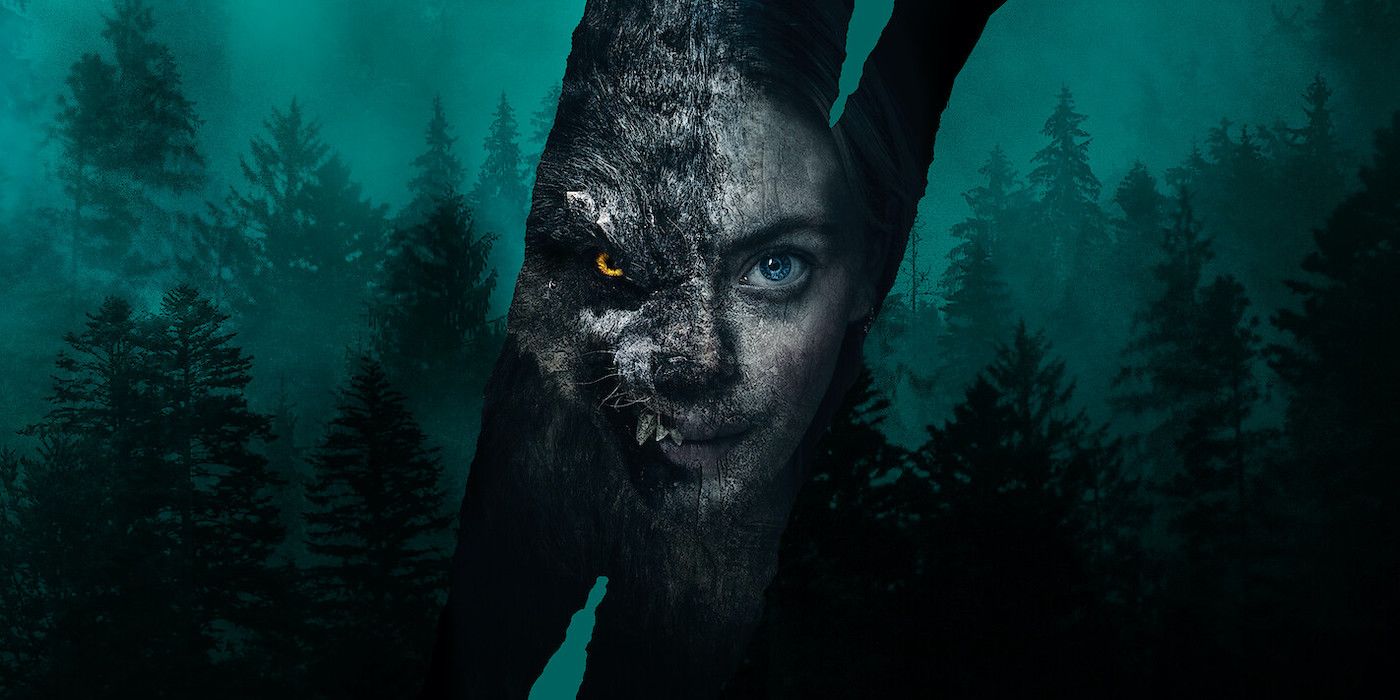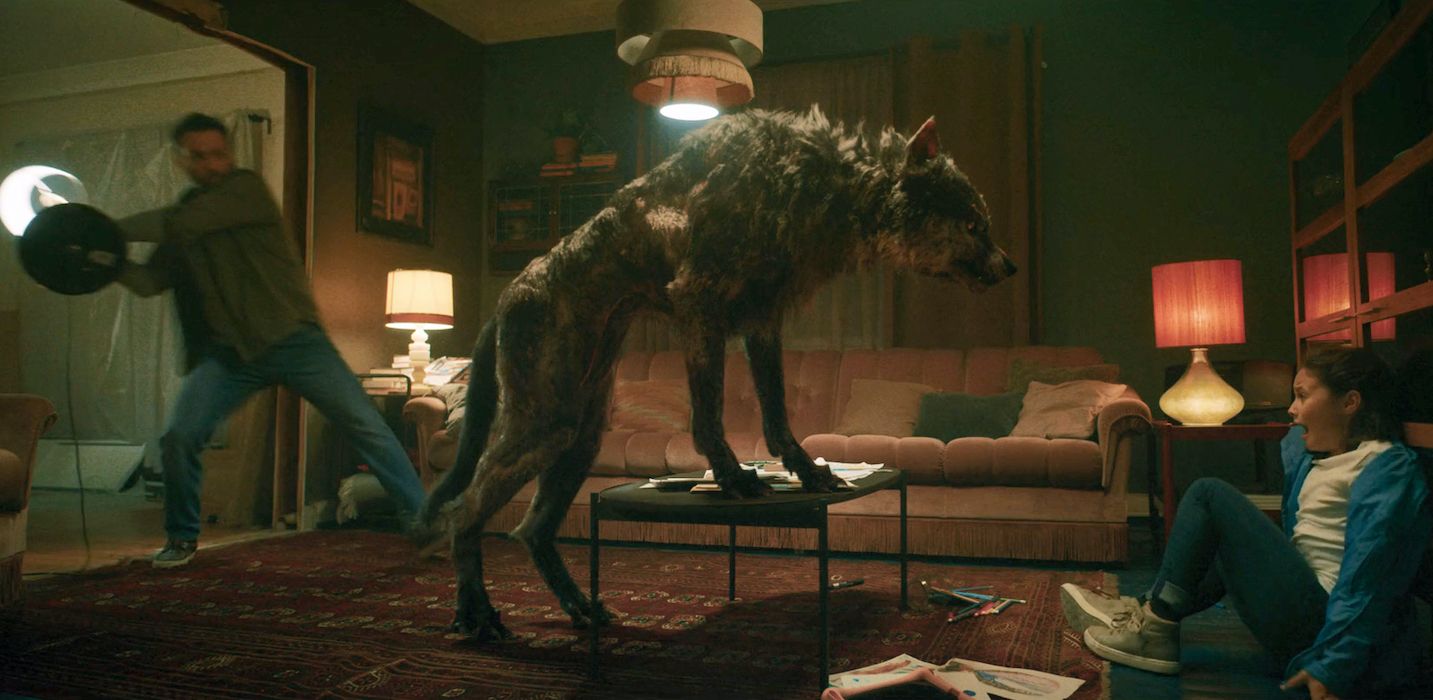Viking Wolf, the surprise Netflix hit out of Norway, is the latest in a growing list of werewolf IPs to make waves in the horror landscape. But director Stig Svendsen's film gives us a different style of werewolf than the classic Hollywood type we're used to, as it both draws from real Norse legends and invents new ones for the film.
Viking Wolf opens with on-screen text telling us the story of Viking Chieftain Gudbrand the Grim, who, in 1050, unwittingly unleashed a hellhound into the Norwegian forest. The film then transitions to follow the Berg family, who have recently moved from Oslo to the small town of Nybo, where the mother, Liv (Liv Mjönes), works as a cop. Her teenage daughter, Thale (Elli Rhiannon Müller Osborne), goes to a party on a bay, where a classmate is attacked and dragged into the woods by an unseen creature. Thale herself is bitten on the shoulder and soon begins experiencing strange and disturbing phenomena.
Werewolves in Norse Mythology
Historical Vikings were really into wolves and werewolves, so much so that it's a bit surprising that Viking Wolf is Norway's first werewolf movie. Although the story of Gudbrand the Grim was invented for the film, wolves with human-like qualities and humans with wolf-like qualities show up again and again in Scandinavian folklore. The most well known and most fearsome is Fenrir, also called the Fenris Wolf, a giant, powerful wolf with the intellect of a man, and the son of Loki and the giantess Angrboda. Along with his two siblings, Jormungandr the World Serpent and Hel, Fenrir was prophesied to bring down the gods on Ragnarök, the Norse doomsday. At that time, Fenrir himself would kill Odin.
In the film, Fenrir and his siblings get a shout-out in a school lecture during which Thale begins having unnerving hallucinations. Beyond that, Fenrir's myth isn't directly connected to the lore of the film, except perhaps as a reminder of the ubiquity and importance of wolves in Norse legend. The film's resident werewolf expert is a Van Helsing type named Lars Brodin (Ståle Bjørnhaug), who has been tracking the creature that attacked the teenagers at the bay. When he first meets the skeptical Liv, he gives her a silver bullet, warning her that it is the only weapon that can fell the beast. After he's proven right, Liv is finally convinced that the creature is indeed a werewolf, and she returns to Lars to learn what she can about it, discovering that this werewolf is not the kind we're familiar with.
The Viking Wolf Isn't Like the Werewolves We're Used To
"You hear the word 'werewolf' and you picture a mix of man and wolf, running around on two legs, howling at the moon," says Lars. That's not the case with the Viking wolf. While it was once human, and its bite does infect its victims with its curse, superficially, it simply looks like a large wolf, and it can never take human form again. "When the curse is completed, then the human is lost forever," says Lars.
Lars also implies that the origins of the Norwegian werewolf are unclear -- he doesn't seem to know what we learned in the opening text about Gudbrand the Grim. He theorizes that the Vikings might have brought the curse of the wolf back with them from Europe in the 1100s, but he also notes that "humans have always wanted to conquer and command the animal's powers. At first through various sacrificial rites. Experiments. Crossbreeding with other animal species." Lars' mention of sacrificial rites might be an allusion to a real group of Viking warriors known as the úlfhéðnar. According to the Norse Viking sagas, these fighters wore wolf hides in battle, howled, clawed at their enemies, bit their shields, and appeared not to feel pain, and may have taken part in the type of rituals Lars refers to in order to harness the power of the wolf before battle. Their behavior may have contributed to the spread of werewolf mythology in Scandinavia.
The Sigmundr and Sinfjötli Myth
Among the most famous Norse werewolf myths is that of Sigmundr and Sinfjötli, a father and son who steal a pair of wolf hides from a wealthy house. When they put on the hides, they take on a wolf-like appearance with long canine teeth, and they begin walking on all fours. They also find themselves overwhelmed with a blood rage and go on a killing spree, slaughtering everyone they meet in the forest. At last, when they run out of people to kill, Sigmundr turns on his own son and attacks him. Sinfjötli survives, and the two men remove the wolf hides, return to their human form, and burn the hides. The story was already centuries old in oral tradition when it was recorded in a Viking saga in the late 13th century. Like the Viking wolf, Sigmundr and Sinfjötli are driven by an irresistible urge to attack humans, but unlike the film, they're able to regain their humanity at will.
Vikings were also often referred to as wolves by their enemies, the Europeans they would plunder and raid. Their ferocity and brutality in battle, along with the animalistic behavior of bands like the úlfhéðnar, led their victims to equate them with the feared beasts, calling them "ware-wolves," -- "ware" or "wer" being the Old English word for "man."
Is the Curse in 'Viking Wolf' Scientific or Magical?
Viking Wolf attempts to explain with science what was attributed to magic in Viking times. After a veterinarian examines the body of the wolf that Liv shot, he finds traces of human DNA mixed in with its wolf DNA, and discovers that the eight lead bullets that Liv shot it with had no effect, while the lone silver bullet dissolved the wolf's flesh. Yet, Lars also describes lycanthropy as a "curse," implying that there might be magic involved as well. And certainly, the scene in which we finally witness a human transform into a wolf feels more magical than scientific (and, for the record, is beautifully wrought).
Viking Wolf drops at an opportune moment: werewolves are hotter than ever in American media, and although this Norwegian film is in many ways a fairly standard werewolf story -- complete with mysterious attacks by unseen creatures, gruesome wounds, and body horror -- it draws on a long, proud history of wolf legends in Norse folklore, one that's ripe for more adaptation. And after the success of Viking Wolf (it became the most-watched non-English film on Netflix in the first two weeks of its release), here's hoping that the Norwegian film industry continues to tap into the rich lore at its disposal.



